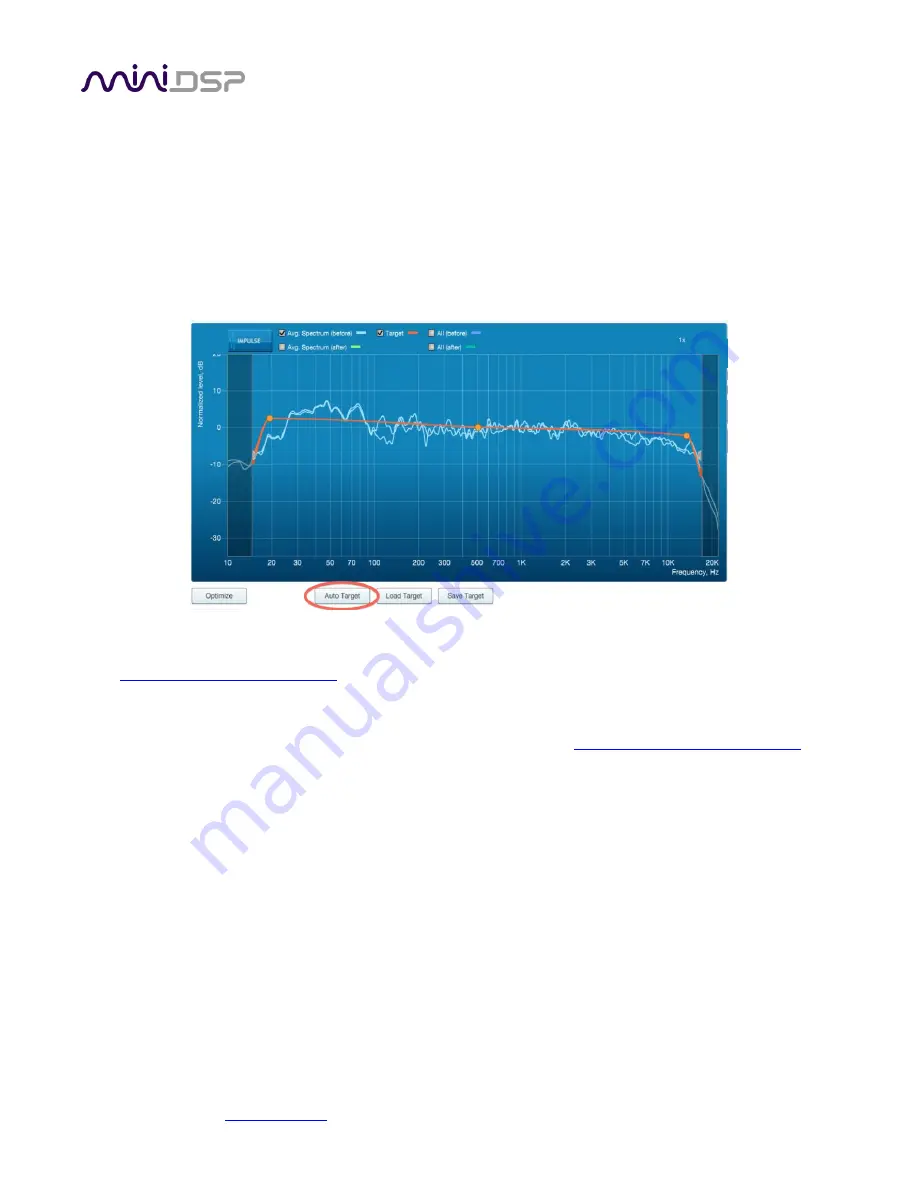
miniDSP Ltd, Hong Kong /
www.minidsp.com
/ Features and specifications subject to change without prior notice
29
4.2
D
ESIGNING YOUR TARGET CURVE
The
target curve
is the desired in-room frequency response with the
NanoAVR DL
processor performing digital
room correction.
4.2.1
The Auto Target
When first viewing the
Filter Design
tab, an estimated target curve suitable for your speakers is shown as the
red curve. This estimated target curve can be restored at any time by clicking on the
Auto Target
button.
Note: restoring the auto target will erase the current target curve. If you wish to keep it, you can save it to a file
– see
Saving and loading target curves
below
4.2.2
Editing the target curve
You can edit the target curve to set any desired magnitude response (see
Guidelines for target curve design
below). This is done with the use of
anchor points
, shown as orange dots on the curve:
Drag an anchor point to move it.
Double-click on the target curve to add an anchor point.
Double-click on an anchor point to delete it.
The regions to the left and right of the response graphs that are shaded in a darker color are excluded from
magnitude response correction. You can adjust the frequency range for your system and preferences. For
example, low-frequency noise (traffic, machinery) may be present in some environments, so it is best to adjust
the frequency range to exclude these frequencies from the correction. Or, you may be happy with the in-room
response at higher frequencies, so you can set the frequency region to limit correction to the modal region (up
to 300 Hz, in a typical room).














































